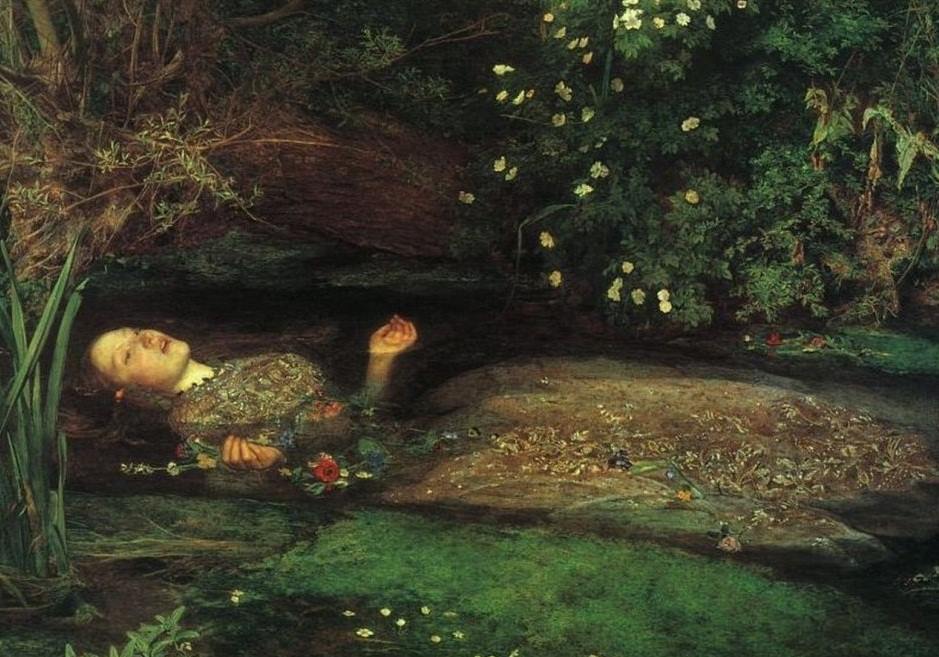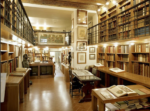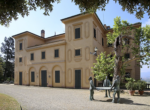Preraffaelliti. L’utopia della bellezza

Settanta capolavori della Confraternita dei Preraffaelliti dalla collezione della Tate, arrivano a Torino, dopo un tour mondiale, prima di rientrare a Londra dove verranno custoditi in un’ala dedicata del museo e da cui non usciranno per molti anni.
Comunicato stampa
Settanta capolavori della Confraternita dei Preraffaelliti dalla collezione della Tate, arrivano a Torino dal 19 aprile al 13 luglio 2014, dopo un tour mondiale, prima di rientrare a Londra dove verranno custoditi in un’ala dedicata del museo e da cui non usciranno per molti anni.
L’esposizione, realizzata e curata da Alison Smith, capo curatore della sezione di arte inglese del XIX secolo presso la Tate Britain, insieme a Caroline Corbeau-Parsons (Assistente Curatore, Arte Inglese 1850-1915), presenta per la prima volta a Torino e in Italia alcuni capolavori indiscussi della Confraternita dei Preraffaelliti, summa pittorica dell’età vittoriana.Promossa da Comune di Torino – Assessorato alla Cultura, Turismo e Promozione, dalla Direzione Regionale per i Beni Culturali e Paesaggistici del Piemonte e dal Polo Reale di Torino, la mostra è prodotta da 24 ORE Cultura – Gruppo 24 Ore e realizzata in collaborazione con la Tate Britain e ha ottenuto il patrocinio del MiBACT – Ministero dei Beni e delle Attività Culturali e del Turismo.
La voce italiana della mostra sarà Luca Beatrice che racconterà, in un saggio a catalogo e nel video in mostra, l’influenza che la Confraternita dei Preraffaelliti ha avuto sulla cultura occidentale, tra gotico e dark, a partire dagli anni ’80. Autentici precursori dello stile New Gothic che hanno trovato un punto di riferimento nell’eredità delle tematiche preraffaellite sono, ad esempio, i registi Tim Burton e Francis Ford Coppola con le loro poetiche visionarie, la moda dark interpreta da Alexandre McQueen, Karl Lagerfeld, John Galliano e Jean Paul Gaultier o, ancora, i gruppi del dark inglese come i Big Four, i Joy Division, i Bauhaus e, soprattutto, i Cure.
La mostra, allestita nello spazio mostre del Polo Reale, in Palazzo Chiablese – in cui saranno presenti vere e proprie icone del periodo come Ophelia di John Everett Millais, L’amata (La sposa) di Dante Gabriele Rossetti, Prendete Vostro figlio, Signore di Ford Madox Brown e Sidonia von Bork 1560 di Edward Coley Burne-Jones – intende dar ragione di ogni aspetto tematico del movimento preraffaellita e si articola quindi in 7 sezioni: La Storia, La Religione, Il Paesaggio, La vita moderna, La poesia, La Bellezza e Il Simbolismo.
La storia della Confraternita dei Preraffaelliti ha inizio con tre giovanissimi artisti – John Everett Millais, Dante Gabriel Rossetti e William Holman Hunt – decisi a ribellarsi contro il soffocante establishment dell’epoca per creare opere più vere e ispirate direttamente alla natura, alla storia, alla religione e alla letteratura. La Confraternita, fondata nel settembre del 1848, aveva l’obiettivo radicale di cambiare la società attraverso l’arte, ispirandosi agli ideali del passato e del primissimo Rinascimento.
I Preraffaelliti hanno dipinto quindi i loro paesaggi en plein air per riprodurre il più fedelmente possibile ogni fiore e ogni stelo d’erba. Le loro donne sono persone in carne e ossa, con una sensualità mai celata e spesso ostentata. I loro colori, presi direttamente dalla natura, hanno un’intensità di gioiello, la luce è quella cristallina e diretta del sole. I loro quadri raccontano una storia, spesso presa da Dante Alighieri o William Shakespeare, dalle novelle medievali o dalla Bibbia e puntano sempre a un forte impatto emotivo. La religiosità, tema spesso presente nei quadri dei Preraffaelliti è espressa con un’intensità che all’epoca spesso sconvolse i critici d’arte vittoriani come Charles Dickens, ma che incontrò invece il favore di John Ruskin, loro sostenitore e mecenate.
Nella prima sezione, “La Storia”, saranno presenti i lavori ispirati ai drammi di Shakespeare, ad altre opere narrative e a storie medievali. I temi scelti dai Preraffaelliti si basavano sulle loro letture, su ciò che vedevano a teatro e all’opera, ma anche alle composizioni di poeti loro contemporanei come Tennyson o Elizabeth Barrett Browining, o alle rovine medievali di alcuni edifici londinesi. Tra le opere presenti in questa sezione ricordiamo Il disseppellimento della regina Matilda e Mariana di John Everett Millais, oltre alla già citata Ofelia, Claudio e Isabella di William Holman Hunt e Lear e Cordelia di Ford Madox Brown.
Nella seconda sezione sono esposte le opere di soggetto religioso che non erano destinate a luoghi sacri ma alla committenza privata o alle mostre. I temi sono quelli biblici, sovente del Nuovo Testamento ma che si rifanno a un cattolicesimo delle origini. Convinti che il pubblico fosse pronto per la loro nuova forma di arte, i Preraffaeliti recuperarono il simbolismo dell’arte cattolica primitiva, venendo addirittura accusati di lanciare oscuri messaggi religiosi. Nessuno di loro però era un cattolico praticante e consideravano la Bibbia un libro che conteneva piuttosto storie letterarie e poetiche che non temi teologici. In questa sezione, tra le altre opere, si potranno ammirare Ecce Ancilla Domini! di Dante Gabriel Rossetti, Gesù lava i piedi di Pietro di Ford Madox Brown e La vigilia del Diluvio di William Bell Scott.
Lo sguardo dei Preraffaelliti si rivolse anche alle questioni sociali del loro tempo. Nella terza sezione, “La società contemporanea”, si darà quindi conto del loro pensiero politico tradotto in opere che si caratterizzano come una critica alla società industriale e un richiamo al passato in cui l’industria non aveva ancora corrotto l’Inghilterra, anche sulla spinta delle idee del loro mecenate John Ruskin, che sosteneva idee molto radicali in proposito. Nel suo libro “The Nature of Gothic” del 1853, Ruskin affermava che la società medievale e le allora condizioni di vita e di lavoro, erano preferibili alla “schiavitù” moderna.
Le opere di questa sezione spiegano come i Preraffaelliti abbiano cercato di infondere nei loro quadri l’invito al ritorno a un mondo più giusto, propugnando la necessità della salvezza e del reciproco sostegno tra le diverse classi sociali , come nel quadro di William Holman Hunt Risveglio di coscienza o quello di Ford Madox Brownin Prendete Vostro figlio, Signore.
Il modo di dipingere i Paesaggi, tema della quarta sezione, costituisce uno dei caratteri più originali della Confraternita. Avidi lettori dei due volumi di Ruskin sui pittori moderni, in cui il critico difendeva Turner e la pittura di paesaggio, i Preraffaelliti abiurarono la visione panoramica a favore della cura di ogni singolo elemento della composizione. I materiali usati, i luoghi dove sono stati dipinti e il risultato con cui questi paesaggi appaiono allo spettatore, non ha riscontro in tutta l’arte paesaggistica precedente.
Le opere di membri della Confraternita dei Preraffaelliti e dei loro seguaci, tra cui John Brett e William Dyce, dimostrano potentemente l'impatto della loro filosofia sulla pittura di paesaggio durante la seconda metà del XIX secolo. Tra le opere presenti in questa sezione, ricordiamo Maggio a Regent’s Park di Charles Allston Collins, Il fiume Brent a Gendon di Ford Madox Brown e Paesaggio con ragazza accanto a un faggio di George Price Boyce.
A metà del 1850 Rossetti prese a lavorare con l’acquarello creando una serie di composizioni coloratissime e ricche di particolari. Questi lavori sono stati successivamente presi a modello da artisti posteriori anche per le cosiddette arti decorative. In questa sezione, in cui si dà conto dello stile pittorico della Confranternita e degli influssi che esercitò all’interno del movimento, si trovano i lavori di Elizabeth Siddall, musa e poi moglie di Rossetti, che incoraggiata da Ruskin iniziò a dipingere. I suoi lavori, tutti realizzati su piccola scala, indicano una personalità artistica distinta, influenzata, ma non dominata, da Rossetti.
Verso la metà del 1850 un gruppo di giovani artisti, che s’ispirava ai Preraffaelliti e soprattutto dal lavoro di Rossetti, formò una seconda generazione di Preraffaelliti il cui lavoro è andato oltre l’opera dei fondatori cimentandosi con l’interior design, la realizzazione di mobili, tessuti e carte da parati.
Come Millais anche Rossetti era alla ricerca della bellezza, tema di questa sezione, ma un tipo di bellezza che fosse anche nuova e radicale. Nel 1859 Rossetti torna a cimentarsi con la tecnica ad olio, arrivando a comporre opere sorprendenti: le donne ritratte sono sensuali, riccamente descritte e si ispirano ai capolavori di Tiziano e Veronese. Tra le opere inserite in questa sezione, rammentiamo Proserpina e Beata Beatrix di Rossetti e Oriana di Frederick Sandys.
Nella sezione finale, “Il Simbolismo”, si dà conto dell’influsso che l’arte dei Preraffaelliti ebbe sui movimenti artistici successivi. Sia in patria sia altrove, il lascito artistico del movimento derivò soprattutto da Dante Gabriel Rossetti, la cui sublimazione della figura femminile in un contesto drammatico, al di sopra di qualunque messaggio morale o letterario predominante, fece una profonda impressione su Edward Burne-Jones e, attraverso di lui, sul Simbolismo europeo.
Il catalogo della mostra è edito da 24 ORE Cultura.
In collaboration with Tate Britain in London, over seventy masterpieces of the Pre-Raphaelite Brotherhood will be on display in Turin from 19 April to 13 July 2014 as the last stage of a world tour before returning to a dedicated wing of the museum in London, which they will not leave again for many years.
Created and curated by Alison Smith, chief curator of British art to 1900 at Tate Britain, the exhibition presents some undisputed masterpieces of the Pre-Raphaelite Brotherhood, the pictorial peak of the Victorian age, for the first time in Turin and in Italy.
Promoted by the Turin Department of Culture, the Regional Directorate for the Cultural and Natural Heritage of Piedmont and the Turin Complex of Royal Museums, the exhibition is produced by 24 ORE Cultura - Gruppo 24 Ore and enjoys the patronage of the Ministry of Cultural Heritage and Tourism.
Luca Beatrice, the Italian voice of the event, will outline in the catalogue and in the video shown in the exhibition the influence of the Pre-Raphaelite Brotherhood on western culture, including the dark alternative scene, since the 1980s. Authentic precursors of the new Goth style that found a point of reference in the Pre-Raphaelite legacy include visionary filmmakers like Tim Burton and Francis Ford Coppola, fashion designers like Alexander McQueen, Karl Lagerfeld, John Galliano and Jean Paul Gaultier, and British bands like the Big Four, Joy Division, Bauhaus and above all the Cure.
Held in the refurbished Palazzo Chiablese, the exhibition features authentic icons of the period like Ophelia by John Everett Millais, Dante Gabriel Rossetti’s The Beloved (The Bride), Ford Madox Brown’s Take Your Son, Sir and Sidonia von Bork 1560 by Edward Coley Burne-Jones. In accordance with its aim to address all of the movement’s thematic aspects, it is divided into seven sections: History, Religion, Modern Life, Landscape, Poetic Painting, Beauty and Symbolism.
The history of the Pre-Raphaelite Brotherhood began with three young artists, John Everett Millais, Dante Gabriel Rossetti and William Holman Hunt, who were determined to rebel against the stifling establishment of the age and create works of greater truth directly inspired by nature, history, religion and literature. Founded in September 1848, the movement drew upon ideals of the past and the early Renaissance in pursuing the radical objective of transforming society through art.
The Pre-Raphaelites therefore painted their landscapes in the open so as to reproduce every flower and blade of grass as faithfully as possible . Their women are beings of flesh and blood imbued with a sensuality that is never concealed and indeed often flaunted. Their colours, taken directly from nature, have a gem-like intensity and their light is the direct, crystalline radiance of the sun. Their paintings tell stories that are often taken from Dante, Shakespeare, medieval romances or the Bible and always aimed at strong emotive impact. Religion, a theme often present in Pre-Raphaelite painting, is expressed with an intensity of feeling that shocked the Victorian critics of art, as it did Charles Dickens, but instead found favour with John Ruskin, their patron and champion.
The first section, History, will presents works based on Shakespeare, narrative works and medieval tales. The Pre-Raphaelites drew their subject matter from what they read, what they saw in the theatre and the opera house, the work of contemporary poets like Tennyson and Elizabeth Barrett Browning, and the medieval ruins of some London buildings. The paintings presented in this section include The Disentombment of Queen Matilda, Mariana and the above-mentioned Ophelia by Millais, Claudio and Isabella by Holman Hunt and Lear and Cordelia by Ford Madox Brown.
The works on religious subjects exhibited in the second section were not intended for places of worship but for private homes or exhibitions. The themes are drawn from the Bible, often the New Testament, but informed by a primal vision of Christianity. Convinced that public was ready for their new form of art, the Pre-Raphaelites returned to the symbolism of primitive Christian art and were indeed accused of purveying obscure religious messages. They were not, however, practicing Christians and regarded the Bible as a poetic and literary rather than theological source. The works featured here include Rossetti’s Ecce Ancilla Domini, Jesus Washes Peter’s Feet by Ford Madox Brown and William Bell Scott’s Eve of the Deluge.
The Pre-Raphaelites also addressed the social issues of their time. The third section, Modern Life, shows how their political views were expressed in works constituting a critique of the industrial society and harking back to a time before Britain was corrupted by industry. They were influenced in this by their patron John Ruskin, the advocate of some very radical views, who claimed in The Nature of Gothic (1853) that medieval society and the living and working conditions of the time were preferable to modern “slavery”.
The works in this section show how the Pre-Raphaelites sought in their paintings to call for a return to a more just world, not least through evangelical parables, proclaiming the need for salvation and mutual support with respect to a corrupt condition. Examples include Holman Hunt’s Awakening Conscience and Ford Madox Brown’s Take Your Son, Sir.
The Pre-Raphaelites’ way of painting landscapes, the subject of the fourth section, constitutes one of their primary and most original characteristics. Avid readers of the volumes of Ruskin’s Modern Painters, where the critic defended Turner and landscape painting, they eschewed the panoramic vision in favour of detailed attention to every single detail of the composition. These landscapes had no precedent in the whole of previous art as regards their impact on the viewer as well as the materials used and the places where they were painted.
The works of the members of the Pre-Raphaelite Brotherhood and theirs followers, including John Brett and William Dyce, powerfully demonstrate the repercussions of their philosophy on landscape painting in the second half of the 19th century. The works presented in this section include May, in the Regent’s Park by Charles Allston Collins, Ford Madox Brown’s The Brent at Hendon and George Price Boyce’s Girl by a Beech Tree in a Landscape.
Rossetti took up watercolour in the mid-1850s and produced a series of brightly coloured and richly detailed works that were taken up as models by later artists also in the sphere of the decorative arts. This section, which addresses the Brotherhood’s pictorial style and its influence inside the movement, includes works by Elizabeth Siddal, Rossetti’s muse and then wife, who was encouraged by Ruskin to take up painting. The results, all on a small scale, indicate a distinct artistic personality influenced but not dominated by Rossetti.
Halfway through the 1850s, a group of young artists influenced by the Pre-Raphaelites and above all by Rossetti’s work and Ruskin’s writings formed the movement’s second generation, who went beyond the founders to explore the spheres of interior design and the production of furniture, fabrics and wallpaper.
Like Millais, Rossetti also pursued beauty, the theme of this section, but of a new and radical kind. He returned to oil painting in 1859 and produced some staggering works. Inspired by the masterpieces of Titian and Veronese, the women depicted are sensual and richly detailed. The works on show here include his Proserpine and Beata Beatrix as well as Oriana by Frederick Sandys.
Symbolism, the final section, addresses the Pre-Raphaelites’ influence on subsequent artistic movements. Both in Britain and elsewhere, the Brotherhood’s artistic legacy stems above all from Dante Gabriel Rossetti, whose sublimation of the female figure in a dramatic setting, transcending any predominant moral or literary message, made a deep impression on Edward Burne-Jones and through him on European Symbolism.



